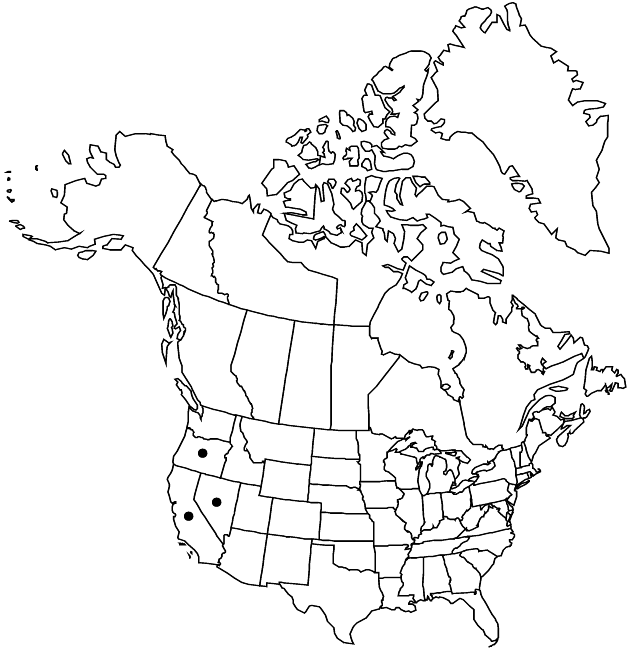Pyrrocoma lanceolata var. subviscosa
Phytologia 73: 58. 1992.
Endemic
Basionym: Pyrrocoma subviscosa Greene Proc. Acad. Nat. Sci. Philadelphia 47: 549. 1896
Synonyms: Haplopappus subviscosus (Greene) S. F. Blake
Plants 20–40 cm. Stems erect, ascending or decumbent, tomentulose, densely stipitate-glandular, especially peduncles. Leaves: basal blades 80–200 × 8–30 mm, faces tomentulose to glabrate, stipitate-glandular. Heads (1–) 3–7 in paniculiform arrays. Peduncles 2–5 cm. Involucres 7–9 × 10–15 mm. 2n = 12.
Phenology: Flowering Jul–Aug.
Habitat: Dry slopes, grassy alkaline meadows
Elevation: 1500–2000 m
Distribution

Calif., Nev., Oreg.
Discussion
Variety subviscosa geographically overlaps with var. lanceolata; it occurs at somewhat higher elevations. It is distinguished mostly by its stipitate glands.
Selected References
None.
Lower Taxa
None.
"[" is not declared as a valid unit of measurement for this property."[" is not declared as a valid unit of measurement for this property.
... more about "Pyrrocoma lanceolata var. subviscosa"
introrse +
connate +
spinulose +
green +
distinct +
herbaceous +
acute +
scarious +
green +
distinct +
hirsute +
papillate +
paniculiform +
continuous +
1-nerved +
short-petiolate +
clasping +
white-chartaceous +
attenuate +
3mm;30mm +
ribbed +
stigmatic +
brownish +
persistent +
15;60 +
unequal +
absent +
lanceolate +
reduced +
sessile +
lanceolate +
yellow +
absent +
10-12-nerved +
dimorphic +
3.5mm;4.5mm +
staminate +
straight +
distinct +
proximal +
1;5 +
bisexual +
dispersed +
singly +
indeterminate +
3;7 +
surrounding +
hemispheric +
alternate +
erect +
deltate +
eciliate +
attenuate +
2-carpellate +
inferior +
attached +
anatropous +
tawny +
persistent +
tough +
thick +
absent +
connate +
1-nerved +
persistent +
distinct +
herbaceous +
falling +
proximal +
unequal +
equal +
Phytologia +
1992 +
pistillate +
absent +
fertile +
epaleate +
pitted +
convex +
fibrous +
exalbuminous +
modifed +
3;4 +
Endemic +
alternate +
red-tinged +
triangular +
2-branched +
glabrous +
Pyrrocoma lanceolata var. subviscosa +
Pyrrocoma lanceolata +
variety +
tubular-funnelform +
equaling +
sessile +
perennial +